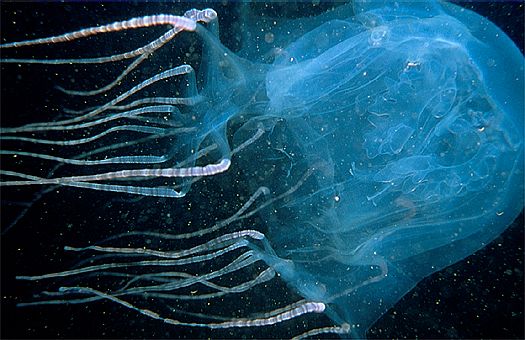

They are most active between November and April (jellyfish season). Box jellyfish numbers, as those of all jellyfish, are growing, exacerbated by warming oceans, and oxygen-depleting fertilizers that eventually find their way into the water. Yes, you don't want to experience a box jellyfish sting.īox jellyfish are among the oldest animals on the planet, dating back at least 600 million years, surviving several mass extinctions.

In humans, however, Yanagihara says that digestive cocktail acts like a "molecular buckshot.causing holes in all our cells." A person's heart can stop in as little as five minutes.

Instead, when a box jellyfish stings, it releases a "digestive cocktail" that helps the creature catch and digest its meals. Also called bluebottle jellyfish, Portuguese man-of-war jellyfish live mostly in warmer seas. The more dangerous species of box jellyfish are in the warm waters of the Pacific and Indian oceans.

Angel Yanagihara, a marine biologist at the University of Hawaii at Manoa, and the world's foremost expert on box jellyfish, says that the box jellyfish does not release venom like a rattlesnake. Box jellyfish can cause intense pain and, rarely, life-threatening reactions. See our recommended snorkeling and scuba diving tours in each destination along the East Coast.Dr. The infamous sea jelly is large and transparent with a box-shaped bell and up to 60 tentacles in four clumps along the base of the bell. Carybdea branchi, pictured here, is a relative of the Australian box jellyfish ( Chironex fleckeri ), which is considered the most venomous marine animal. The Box Jellyfish is a highly advanced species. So go ahead and plan that Great Barrier Reef holiday in Australia. What is the most venomous marine animal The Australian box jellyfish is considered the most venomous marine animal. Box jellyfish (class Cubozoa) are cnidarian invertebrates distinguished by their box-like (i.e. They inhabit parts of the Indian Ocean, Pacific Ocean, and the Great Barrier Reef. You can be assured you have just as much chance of coming across a box jelly fish in many other countries and not just Australia.īox jellyfish are also found in popular holiday locations such as Bali, Thailand, The Phillipines and quite a number of other countries with warm coastal waters such as South-Eastern Asia, Africa, the Gulf of Mexico, and the Indo-Pacific. Geographic Range Chironex fleckeri, also known as box jellyfish, lives in and around the waters of Australia and Southeast Asia. While the common minsconception is that the box jellyfish are more commonly associated with being indigenous to Australia this is not actually factually correct.Īustralia has been at the forefront of studying these marine animals over decades, and research scientists from all over the world arrive on the Great Barrier Reef to meet with the local experts to study and share their findings, which are then published with two main words, "Australia and the "Great Barrier Reef",thus the misconception that box jellyfish are only found in Australia. Species of the box jellyfish (Cubozoa) genus Alatina are notorious for their sting along the beaches of several localities of the Atlantic and Pacific. Its 60 tentacles – equipped with millions of nematocysts, or stinging cells – extend from the body, and have the potential to inflict fatal stings to humans. Chironex fleckeri, commonly known as the Australian box jelly, and nicknamed the sea wasp, is a species of extremely venomous box jellyfish found in coastal waters from northern Australia and New Guinea to Indonesia, Cambodia, Malaysia and Singapore, the Philippines and Vietnam. A more recent study demonstrated that in vitro, lidocaine could inhibit the discharge of nematocysts from the jellyfish species Though an entirely different class from the cubozoans that cause Irukandji syndrome, its effect in this species indicates potential promise in carybdeids. Possibly one of the most dangerous marine animals of Australia’s waters, the box jellyfish (Chironex fleckeri) derives its name from the box or bell shape of its body.


 0 kommentar(er)
0 kommentar(er)
